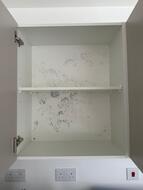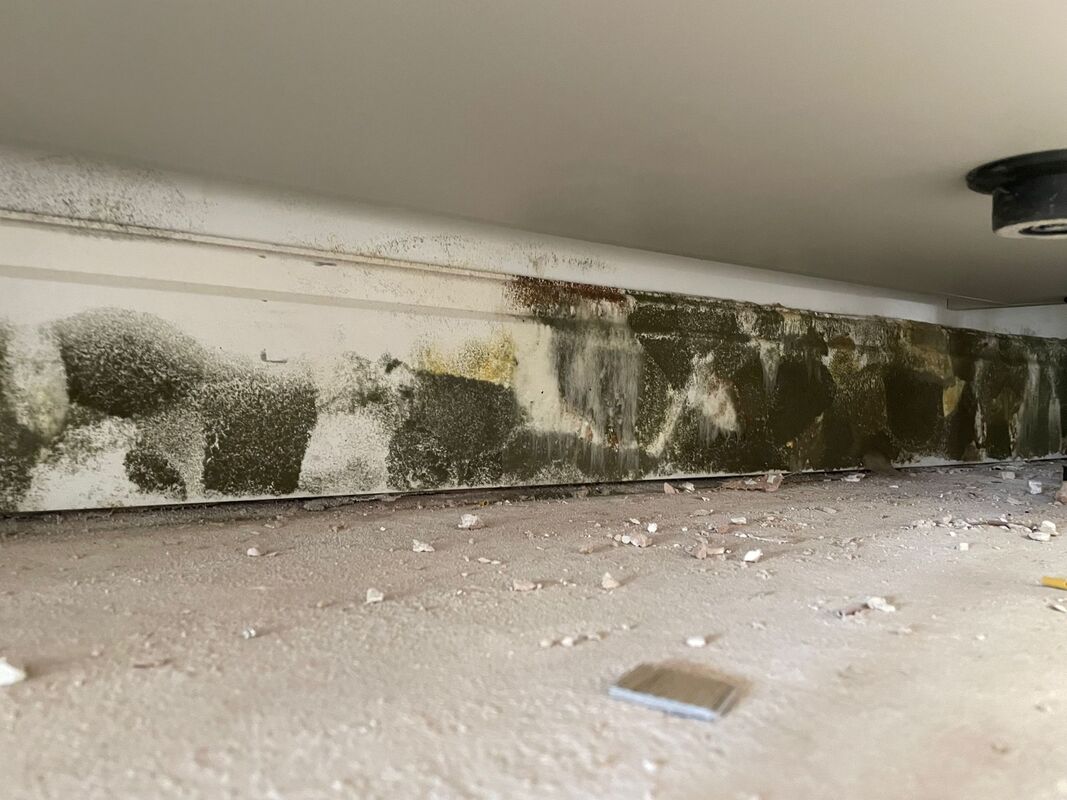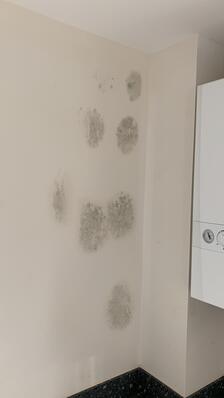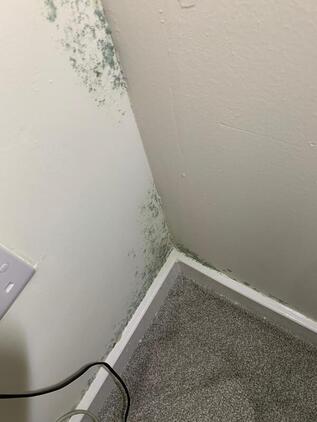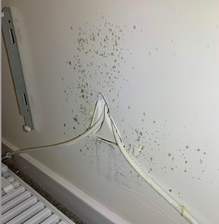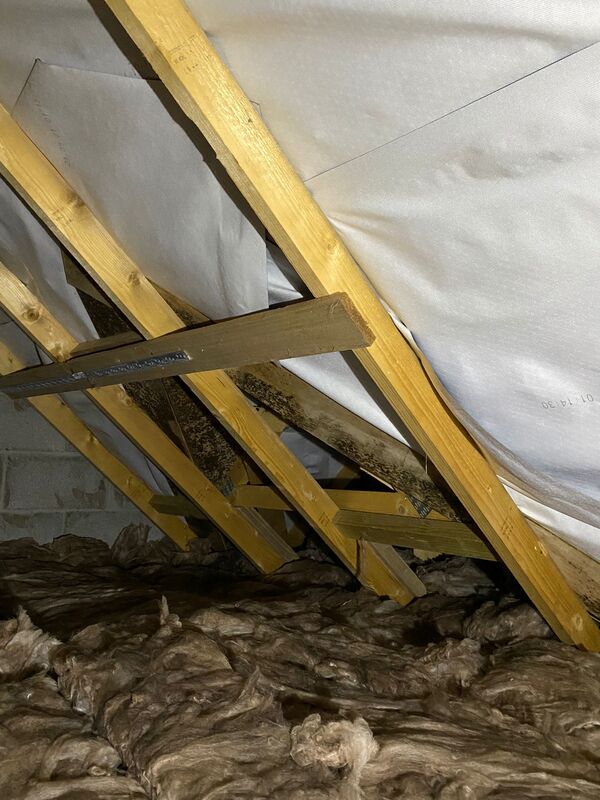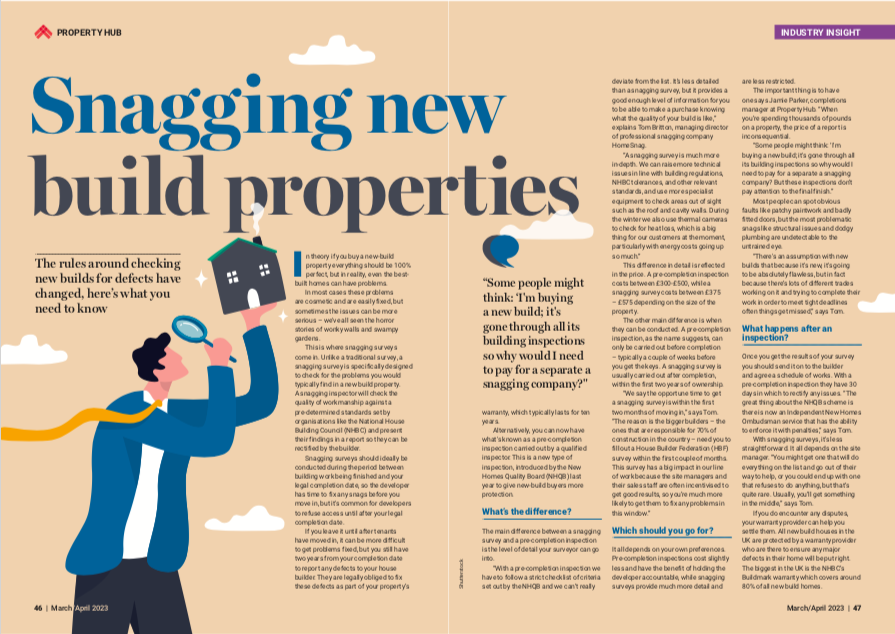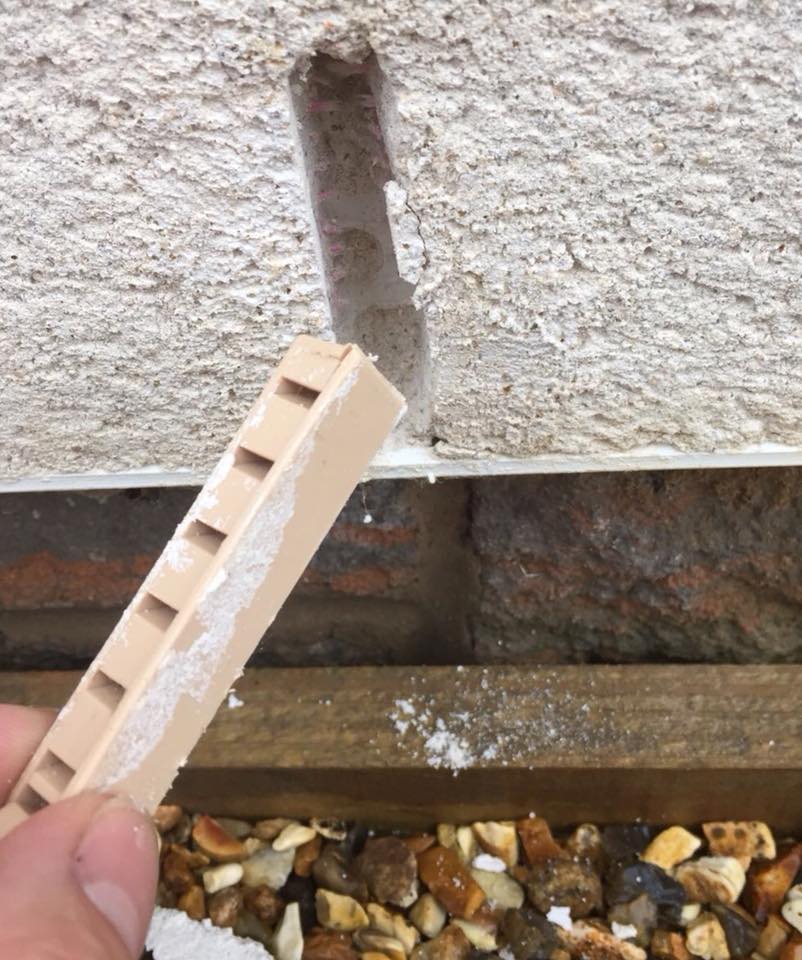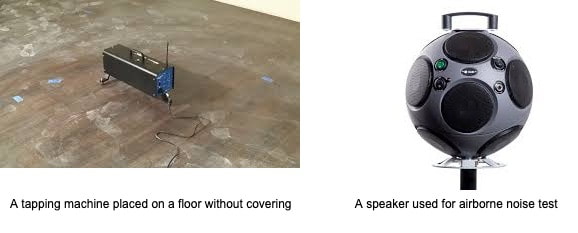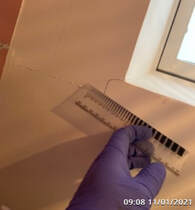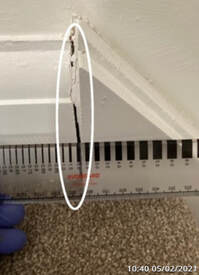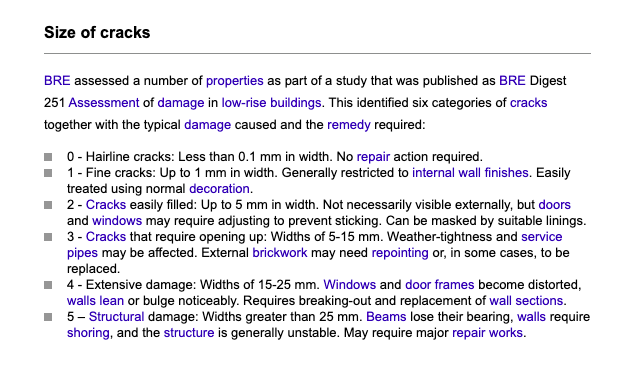|
If you house found mould in your new build house, this article is for you. We will discuss the principal reasons why mould is appearing and what you can do about it depending on where it is happening....
0 Comments
 With many professional snaggers coming to the market over the past year, you may be wondering which is the best snagging company? As previous articles have highlighted, the snagging industry is not regulated so just about anybody can profess to be a professional snagger with no experience or qualifications ...so be wary! This year, HomeSnag have been awarded the most trusted snagging company. Awarded for our consistency in service by demonstrating independently verified customer satisfaction reviews and quality of surveys, we have proven to be the most trustworthy company to use. Have recently celebrated our 7 year anniversary, our company has an unrivalled reputation and market leading surveys. If you are looking for the best snagging company to choose from, look no further.
HomeSnag were featured in a recent ITV feature on new-build snagging. The most interesting aspect it mentioned is that there aren't any requirements for the person to carry out a snagging survey to be qualified. Sadly for snagging surveys this is true, and it is why you shouldn't choose a snagging company based on price because there are an increasing amount of snagging companies that try to copy what we do but lack the knowledge and experience. You should ensure that the person coming out to your property to snag it is a qualified surveyor that is a member of RICS or RPSA. You will pay more for a company like ours with these qualifications, but it is very much the case of getting what you pay for.... There are many snaggers that are raising issues that we wouldn't raise or (even more concerning) missing issues that only a surveyor would know to look for. We know this because often we are the company that customers get around when they've had a poor experience with other snagging companies. In truth there are only a handful of reputable snagging companies to choose from that know what they are doing, as most are ex tradesman or Site Managers doing work on the side. For Pre-Completion Inspections, it is actually a requirement for the person carrying out the survey to be a member of RICS or RPSA (etc) and we are happy to show our accreditations to the Site when prompted alongside our insurance cover. If you are unsure what survey to go for please see our example reports, or contact our office who will be happy to help explain your options more thoroughly.
This month we shared our insights on the differences between the Pre Completion Inspection and Snagging Survey for a property investors magazine. PCI's are proving especially popular with investors that may not have had chance to even see the property but it is available to all purchasers who buying a property from a developer signed up to the New Build Property Ombudsman scheme.
As part of the New Build Ombudsman process, the developer have up to 1 month to rectify all the snags that do not 'Meet Standards' according to the NHQB who launched the scheme in 2022. HomeSnag are the leading snagging company offering PCI's thanks to our software that ensures we inspect according to the specific checklist. We have also ensured our surveyors are extensively training in the process because not just anyone can do Pre Completion Inspections; the NHQB has stipulated that only qualified persons (surveyors, members of RICS or the RPSA) are able to do the reports. An example Pre Completion Inspection can be seen here, and of course feel free to get in touch if you have any questions at all as we would be happy to help. If you need to book a pre completion inspection then please click below for our availability Pre Completion Inspections have been introduced to allow us to go in to a property to inspect its quality before legally completion. This is great news for homeowners because typically beforehand developers would deny such access before moving in. So what is the difference between a pre completion inspection and a snagging survey? The main difference is what we are able to inspect and how detailed we can be... In a pre completion inspection, we follow a strict checklist formed by the NHQB (New Homes Quality Board) as part of the New Build Ombudsman. This checklist is to give homeowners an idea of issues that meet /do not meet standards according to their guidance. It is therefore more restrictive in comparison to our flagship snagging survey which allows us to often raise more technical issues in line with building regs, NHBC (National House Building Control) tolerances and other relevant standards. The table outlines the main comparisons of a pre completion inspection vs snagging survey offered by HomeSnag (note: other companies will likely not offer the same level of services): The areas in bold are those that differ between reports.
For example surveys to compare both in more detail, see Pre-Completion Inspection and Snagging Survey page. Ready to book either a pre completion inspection or snagging survey? Click here We explain what weep vents are on new builds and why they are often fake!So you may have heard about weep 'holes' or weep 'vents' in new build properties and you may have even been warned about fake or dummy ones. Here we'll explain what their purpose is, why there are fake ones and how we identify those that aren't real... What weep holes are: With cavity wall construction you will have at various 'openings' on the external fabric (brick or render typically) something called a cavity tray. These are installed above windows, doors and even meter boxes on your home.
The external fabric of your property is not meant to be impermeable (water resistant) so in heavy rain there is the chance for it to pass through the brick / render or through the mortar, and get inside the 'cavity'. The cavity of your new build house is a gap between the outer fabric (brick / render) and inner blockwork / timer. The reason why new build houses have a cavity is partly to allow for insulation to be put inside to keep the house warm in winter and cooler in the summer. So, where these openings such as doors and windows occur in your house, there will be something called a cavity tray. The purpose of this is to collect any rainwater that manages to find its way into the cavity. Then to allow for the rainwater to easily exit rather than pool on the cavity tray, there will be weep holes. Weep vents come in a few different shapes and sizes, ranging from a long thin type as shown above, or most commonly they will be a quite small circular piece of plastic. Is your new build home noisy?Building acoustics for new builds is covered in the Building Regulations Part E.
Builders either have the opportunity to build properties to exact specifications according to the Robust Details which will make them automatically comply or they can build to their own specification and get an Acoustic check carried out. Most developers carry out the latter process because it is cheaper which means at some stage, a field test will have likely been carried out either on your property or a neighbouring property on your site. The person doing the test has to perform the check on every property type at different levels. These checks comprise of 2 types: Airborne and Impact. The tests are only applicable with houses that adjoin such as a semi detached house or town house and apartments.
The higher number the better with airborne, but needs to be a minimum of 45dB. This is not a particularly high-standard when compared to regulations in Europe. Scotland has different regulations and requires >56db just for a point of reference
After similarly recording and discounting background noise, the impact test should be no more than 62dB. The important aspect to consider when it comes to impact noise testing which makes it difficult to carry out once you have moved in, is that it has to be done on bare flooring, i.e. flooring that has not been covered in tiling or wooden laminate etc. It is possible to do it once you have moved in if the flooring is carpet as long as it can be removed to expose the floorboards underneath. What is the New Homes Quality Board?The New Homes Ombudsman Service (NHOS) has introduced guidelines from the consultation from the New Homes Quality Board (NHQB) for all new-build developers to sign up to. This is the biggest shake-up that has ever occurred in the new-build construction industry and is excellent news for new homeowners. Until now, there has been little guidance for what a customer should do when they are unhappy about the quality of their house. We are often asked by customers what they can do when they have issues the builders are not responding to, and other than raising a dispute with the warranty company (such as the NHBC), a lot of customers resort to going to the press. The New Homes Ombudsman will meditate disputes up to the value of £50,000 (which should cover the majority of cases) and it will span the length of the first 2 years after completion. Crucially, the Ombudsman will hold statutory powers over the builders. There will be a new code of practice for the builders to follow that will be broad, but the main one that affects our industry of snagging houses will be the allowance for us to go in pre-completion. Typically until now, most builders try to deter or simply refuse customers getting us around to do a snagging inspection until after completion. As part of the new build ombudsman, this will change with a requirement for them to allow a professional around to inspect the property pre-completion. The timescale for this inspection will expect to be 1 week prior to collecting the keys, which is a suitable timeframe to address the majority of issues found. There is the question of what a 'professional' means, but we anticipate this being a qualified surveyor or builder that is a part of professional bodies such as RICS (Royal Institute of Chartered Surveyors) or the CIOB (Chartered Institute of Building). The issue otherwise is that inexperienced people will flood the market offering snagging surveys when they are not qualified or experienced in doing so. There will likely be a basic snagging survey format introduced which will allow the homeowner to get a qualified person to check the fundamentals of the property. This will give them the reassurance that their property is of good quality or of course give them the knowledge before they complete over shortfalls. This is in the similar way in which a homeowner for an older home could choose between a RICS condition survey 1, 2 or 3 (1 being the basic condition survey vs 3 being the most in-depth Home Survey) When shortfalls are found, the builder will be required to rectify before completion. This is of course excellent news for homeowners and holds the builders accountable. The exact timeframe this yet to be determined however we anticipate for the official guidelines will be released by the end of the year and for there to be a period of transition for developers abide by the regulations.
What it means for HomeSnag This is excellent news for our company's future as we are the only snagging company in the UK that is Regulated by RICS (Royal Institute of Chartered Surveyors). This will put us in prime position for being the best snagging company to offer either a basic standard of snagging checks or a full snagging survey and package options we currently offer. For more information please see: https://www.nhqb.org.uk/ What is causing a tapping/creaking noise when hot water or heating is on in my new build house?Hearing a tapping or a creaking noise when you have the heating on or when you are running the hot tap on your bath/shower/sink is a common issue. We have been to several new-build houses where the homeowners have been living with the annoyance for years. The most common cause of it is the hot water passing through the copper pipework which vibrates against timber studs. An example of it is shown in the video below where we recently carried out snagging surveys in a block of apartments in the Midlands. To remedy the issue requires intrusive work finding where it is occurring... this can be a process of trial and error because the source of sound can be misleading. What is new build settlement?If you have bought a new build property and find that your site manager is mentioning 'settlement' or tells you "not to worry about 'shrinkage' cracks", then this blog will hopefully be of help to you. We explain the difference between shrinkage and settlement, why it occurs and what to look out for. 'Settlement' from a building surveying point of view technically lasts for 10 years, although on a practical basis you should only really notice the signs within the first 12 months after completion.
Shrinkage can however show signs in other places such as cracks in your brickwork / mortar outside. It can also cause floor tiles to crack (mainly upstairs). This is often why the Sales or Site team will suggest against laying tiles upstairs, as they are less durable to cope with the movement of the house. We would therefore recommend laying a temporary floor surface material in your bathroom such as lino down and then waiting a year before changing to tiles. What is shrinkage?Shrinkage is due to the construction materials drying out. As shown in this video, shrinkage cracks often run along the top of walls rather than at openings, at a constant width no less than 2mm. As these 'wet' construction materials (plaster, mortar and concrete) contain a lot of water, it usually takes several months for the shrinkage cracks to occur. Allowing for ventilation (trickle vents) in the property help this drying out period. So, with this being said, what does the builder have to do? The answer is that it depends what severity the crack is. According to the BRE, anything less than 5mm is considered minor (cosmetic). The NHBC have a similar stance on this and advise that anything less than 2mm is not of a concern. To check this during our snagging survey we use a crack guage ruler and our photographs are date stamped to monitor if the crack grows.
For more information about cracking, a useful document provided by the NHBC is here. Also feel free to get in touch with us if you have any concerns over cracks appearing in your home that may be beyond settlement.
|
A Snaggers BlogHomeSnag inspectors are experts at inspecting new-build houses. This blog shares real examples to demonstrate the importance of getting your new build house or apartment snagged professionally Archives
August 2023
"I always insist that there is specific provision for snagging," says Thomas Moran, partner at law firm Speechly Bircham. "Reputable developers do this anyway, but there are all sorts in the market, some big, some small, so you need a contractual promise than within, say, a year they will come back to remedy any minor defects in the finishing." read full article here
|
||||||||||||||||||||||||||||||
|
|
Office 1, Izabella House, 24-26 Regent Place, Birmingham, B1 3NJ
|

